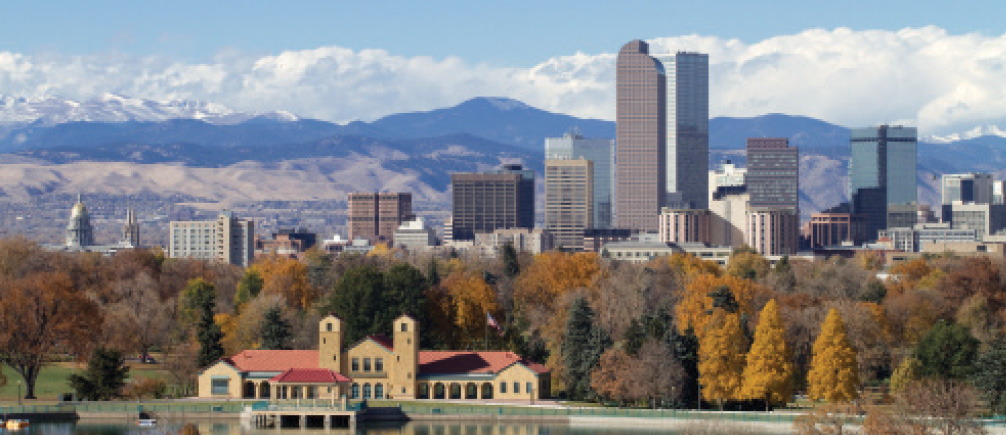Plant Power
Investigating how city greenspaces could mitigate impacts of climate change

Smelling the roses, lounging on fresh-cut grass, listening to a trickling stream—metropolitan parks and rivers work magic on city dwellers, but can their existence do more than feed the senses?
This riddle intrigued CIRES Director of Ecosystem Science Carol Wessman enough to secure some money from the CIRES Innovative Research Program in 2010 and team up with Brian Muller from CU’s Environmental Design program to explore it further. “The overarching question that we are looking at is: Do green landscapes that are interwoven in the built environment influence the quality of life in broader ways than just being pretty?” Wessman said.
In particular, Wessman is interested to see if urban “greenspace”—plants, grasses, and trees—can mitigate the impacts of climate change within cities. “In an urban environment, we are wondering what green landscapes could provide,“ she said.
While community gardens could obviously provide food for city dwellers, other contributions of urban vegetation could be more subtle, Wessman said. Greenspace could cool the local environment; and plants, by taking in carbon dioxide from the atmosphere and storing it in their leaves and roots, act as carbon sinks, she said.
On the path to determining the impact of vegetation on climate mitigation, Wessman and Muller first had to “name their animal,” because a city park isn’t necessarily the same as its country cousin.
While the streets of Las Vegas and Phoenix might be lined with palm trees and iridescent grass, a short drive out from either city reveals this vegetation isn’t native to the local environment.
To gain an understanding of unique features of the urban greenspace in the Denver, Colo., area, the team used satellite sensors to measure the greenness in the Denver Front Range urban landscape and the surrounding grasslands every two weeks throughout 2009. “This is a changing landscape in recorded time,” Wessman said. “What are the trends of growth? We can use satellite data to look at that.”
The team then compared their observed greening findings to compiled socioeconomic data on the surrounding urban area: year of development, percentage of the region covered by buildings, socioeconomic status of inhabitants, etc. The researchers found strong correlations between housing density and median household income in an area where the plants stop being “active” and begin to be dormant for the winter. City parks and golf courses have a longer season of biological activity than do the surrounding grasslands, but that longer growing season comes at a price: increased demands for water.
Whilst the investigation is only in its initial stages, the researchers recognize that even if urban greenspace does benefit city life, those benefits will come at a cost. While trees, plants, and grasses might keep cities cooler, all three need water in the Denver
metropolitan area to survive, and water may be a costly resource in decades to come, Wessman said. “What are the trade-offs that we have made with developing that landscape?” she said. “It is a big problem to fully understand and take into account all of these issues.”
Wessman hopes that once the team has identified the impacts of greenspace on life in the Denver Front Range region, they will then move on to investigating the costs and benefits of urban vegetation in terms of climate mitigation and demand for resources such as water.
In the near term, however, the researchers aim to answer questions that urban planners and city designers will face as megacities continue to grow and the climate continues to warm.
“Ultimately the question is: How can we make our cities more sustainable? How can they be more livable? How can they be more adaptable to changing conditions?“ Wessman said. “The argument that we are making is that this urban greenspace is going to be a critical component of that adaptability.”
Funding for this research was provided in part by a CIRES Innovative Research Program (IRP) award, which is designed to stimulate a collaborative research environment.
Learn more >>


